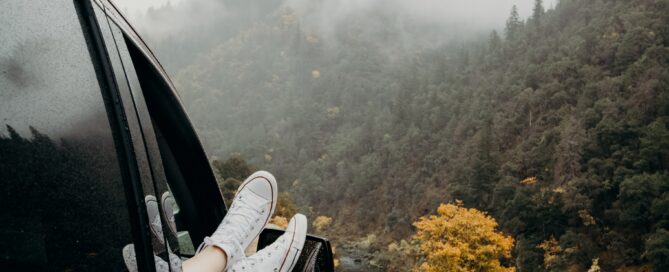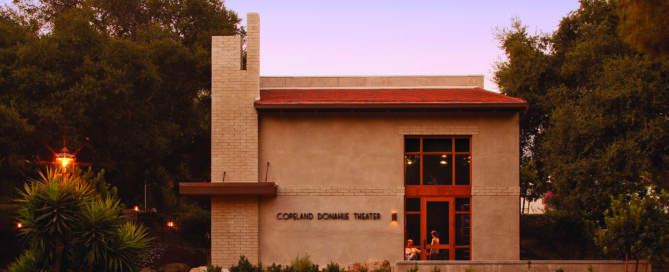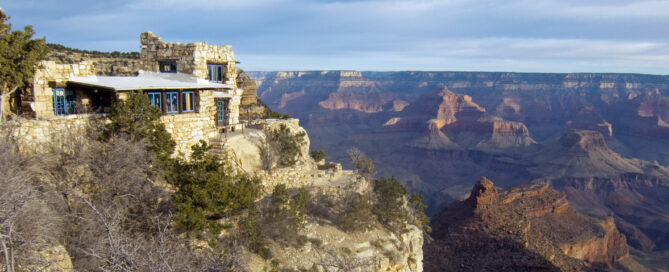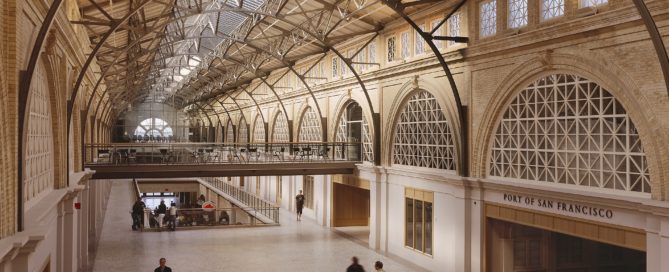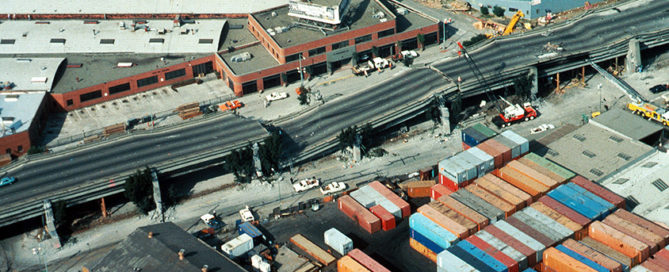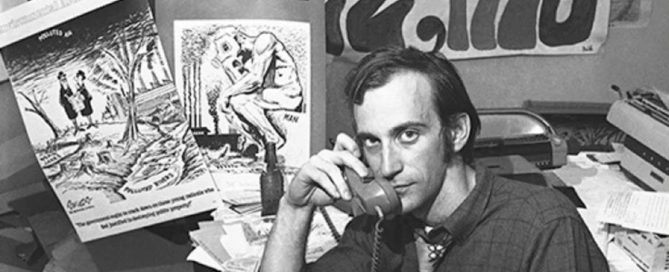The Page
California Roadtrip 2019
It’s summer and that means road trip season is here! We’ve gathered some interesting sites along the California coast to explore. Whether you’re looking for a bit of history, natural splendor, or stunning architecture our list has something for everyone! Leo Carrillo Ranch Historic Park (Carlsbad) This historic ranch was once owned by actor, preservationist and conservationist Leo Carrillo, who was best known for his role in the 50’s television series, The Cisco Kid. A cowboy on and off the set, Carrillo renovated the property and its original adobe buildings and horse stables to evoke the classic California lifestyle. With open courtyards and native plants throughout, bring a picnic and take yourself back to the early days of ranch life by the sea. Greek Theatre (Griffith Park) Head up the coast and stop in Griffith Park, the largest municipal park with urban wilderness area in the United States. Once inside the park, head to the legendary Greek Theatre. Completed in 1930, the canyon site of this 5,870-seat amphitheater was chosen for its good acoustics. Its an excellent place to hear live music under the stars, and has recently been rehabilitated to restore the buildings original features. Hearst Castle/Neptune Pool (San Simeon) Situated among the rolling hills of San Simeon is famed architect Julia Morgan’s masterpiece, the Hearst Castle. Also built for William Randolph Hearst, this sprawling estate draws visitors from all over the world and remains one of California’s top destinations. Recent improvements to the estate, such as the meticulous replacement of over 20,000 tiles at Neptune [...]
45th Anniversary Retrospective-Part IV: Seeking a Larger World
After participating in the decades-long revival of the San Francisco Ferry Building -- which re-opened triumphantly in 2003 -- Page & Turnbull began to cast a wider net. In the 2000s we opened two new offices in Los Angeles and Sacramento, and were challenged with new design opportunities and preservation projects. As the 21st century began to unfold, we asked ourselves: How can our built inheritance shape the future? How can we ally cultural and architectural history with pressing new needs of sustainability and climate change? We attempted to answer these questions in our work for national, state and local parks, towns and cities, academic institutions, and museums or memorials. Here are some of our favorite projects from the ‘aughts’ decade: The Webb Schools, Claremont, California (2006 to date) Our partnership with this distinguished secondary school began in 2006 with the Copeland Donahue Theater, a black-box space overlooking the main campus walk. Since then, we have been fortunate to be part of the team in a series of projects, including multiple dormitory rehabilitations, the redesign of the Susan Nelson Auditorium, and we are currently remodeling the Hooper Student Center. The opportunity to work at Webb was the impetus of opening our office in Los Angeles. John Lesak AIA FAPT, now Principal, took on the task of building a new practice, and has compiled a record of thoughtful and creative responses to building challenges in the city, including work on the iconic Greek Theatre and the Magic Castle. He has also led several GSA-related local projects, like work [...]
Every day is Earth Day!
Lookout Studio. NPS Photo by Michael Quinn. Reflections on the intersection of historic preservation and environmentalism in Page & Turnbull’s vast portfolio of work in the majestic Grand Canyon. When Earth Day took place on April 22, 1970, millions of Americans took to the streets to demonstrate for a healthier planet and a sustainable environment. An eco-political consciousness emerged as people from all backgrounds and party affiliations united for a cause to preserve the natural home we share. These values were in direct alignment with those in the historic preservation movement, such as Charles Page, a founding principal of Page & Turnbull. Page would work with the San Francisco Heritage to create a comprehensive preservation strategy in the 70s to save important buildings in the city, and slow the construction boom. Page & Turnbull carries on that unique combination of environmental sustainability and historic preservation in its work for a multitude of public and private sector clients, including the National Park Service (NPS) and one of the United States most important cultural landmarks, the Grand Canyon. Our firm has worked with NPS as well as Xanterra and Forever Resorts, large park concessions management companies, on over 40 significant structures within the Grand Canyon. Here are some key projects: The Desert View Watchtower, Hermit’s Rest and Lookout Studio Completed in 1914, the Desert View Watchtower emulates a traditional Hopi design and sits at the edge of the Canyon. Listed as a National Historic Landmark, it consists of a bolted steel frame with concrete slab floors and [...]
45th Anniversary Blog Series Part III: Recovering from the Loma Prieta earthquake; a New Life on the Waterfront
San Francisco entered the 1990s literally shaken. The 6.9 magnitude Loma Prieta earthquake rocked the city on Oct. 17, 1989, just months before the decade began. It shook buildings and freeways, including the double decker Embarcadero Freeway that had hidden the Ferry Building from the Market Street artery since 1959. The old Ferry Building, long removed from its original uses, could reveal its face once again. The Port of San Francisco, design and planning community, and Page & Turnbull all foresaw an opportunity to revive the neglected pier property and reunite the waterfront with the city. When the Embarcadero Freeway nearly collapsed, San Francisco had to decide whether to rebuild the freeway or remove it, in order to reconnect the city with the eastern waterfront and the historic Ferry Building. Then-Mayor Art Agnos led the charge to remove the freeway, mainly because the city’s freeway plan, dating back to the 1940s, was no longer in line with the city’s character and had fallen out of favor with its residents. The plan shifted to replacing the freeway with an enhanced Embarcadero. This boulevard, which once had its own railway and supported freight movement during the ‘break-bulk era,’ has always marked the division between San Francisco's waterfront and the rest of the city. In the late 1990s, the Port held a competition to name a development team to rehabilitate the Ferry Building. The group chosen was led by Wilson Meany Sullivan and included several architects, including Page & Turnbull for preservation. Ultimately, the Port sponsored redesign not only of [...]
45th Anniversary Blog Series Part II: The San Francisco Downtown Plan and a Really Big Earthquake
By the end of the 70s San Francisco had officially embraced its architectural history. Thanks to Charles Page and San Francisco Heritage, the Downtown Survey written by Michael Corbett and published as “Splendid Survivors,” meticulously researched older buildings and districts. The Downtown Survey served as a model for preservation policies across the US. As the economic boom of the early 80s changed the city landscape with high-rise office buildings and condominiums, the preservation community along with Page & Turnbull would once again mobilize to save the City's historic character. Ain't nothin' gonna break my stride, Nobody gonna slow me down, oh no…I got to keep on movin' -Matthew Wilder Matthew Wilder’s classic 1983 song, “Break My Stride” was a perfect description of the decade’s sentiment (check it out on our Spotify playlist!). After a halting beginning, economic promise and development characterized the decade. San Francisco flourished and new skyscrapers dotted the financial district. As the city layered on twisting freeways and parking structures, it began losing its walkability and overall urbanity. The boom included high-rise condominiums in residential neighborhoods, leaving some dismayed at what they believed was a disintegration of the city’s small-scale charm. In an effort to create a more symbiotic relationship between being an international city of commerce and remaining true to its small-scale urban character, the Planning Department released its first Downtown Plan in 1983. The Department, under Allan Jacobs, released its first (and only) Urban Design Element of the city’s General Plan. The Element focused on the physical character of the city [...]
45th Anniversary Series Part I: Splendid Survivors and the Environmental Movement of 1976
The 70’s were a time of social awakening, and San Francisco was at the cultural epicenter of it all. The world had seen the Earth from space for the first time in 1969, and this first glimpse of our universal home helped spark the environmental movement. The first Earth Day took place on April 22, 1970, and Congress passed the Environmental Policy Act that same year. Policymakers were examining ways to better utilize their city resources, and one of Page & Turnbull’s founding principals, Charles Page, saw his opportunity to make an impact. “A broader and more sophisticated understanding of environmental quality should encompass natural and man-made factors that make up our environment.”–Splendid Survivors The SF Downtown Survey In the mid-70's, San Francisco entered the greatest re-construction boom in building since 1906, and preservationists were losing their fight to save important historic buildings. In 1975, Charles began working with San Francisco Heritage, a nonprofit organization with a mission to preserve the city’s unique architectural and cultural identity. They realized that a more comprehensive preservation strategy was needed, and in 1978, an intensive architectural survey of downtown San Francisco was completed. In 1979, the Downtown San Francisco Survey was published in Splendid Survivors: San Francisco’s Downtown Architectural Heritage, written by Michael Corbett. Through careful research and awareness of the potential of older buildings, historic preservation and environmental conservation began to intersect. The San Francisco Downtown Survey underscored the value of these buildings and environmentalists took note, realizing these historic properties were often well constructed and better suited [...]
